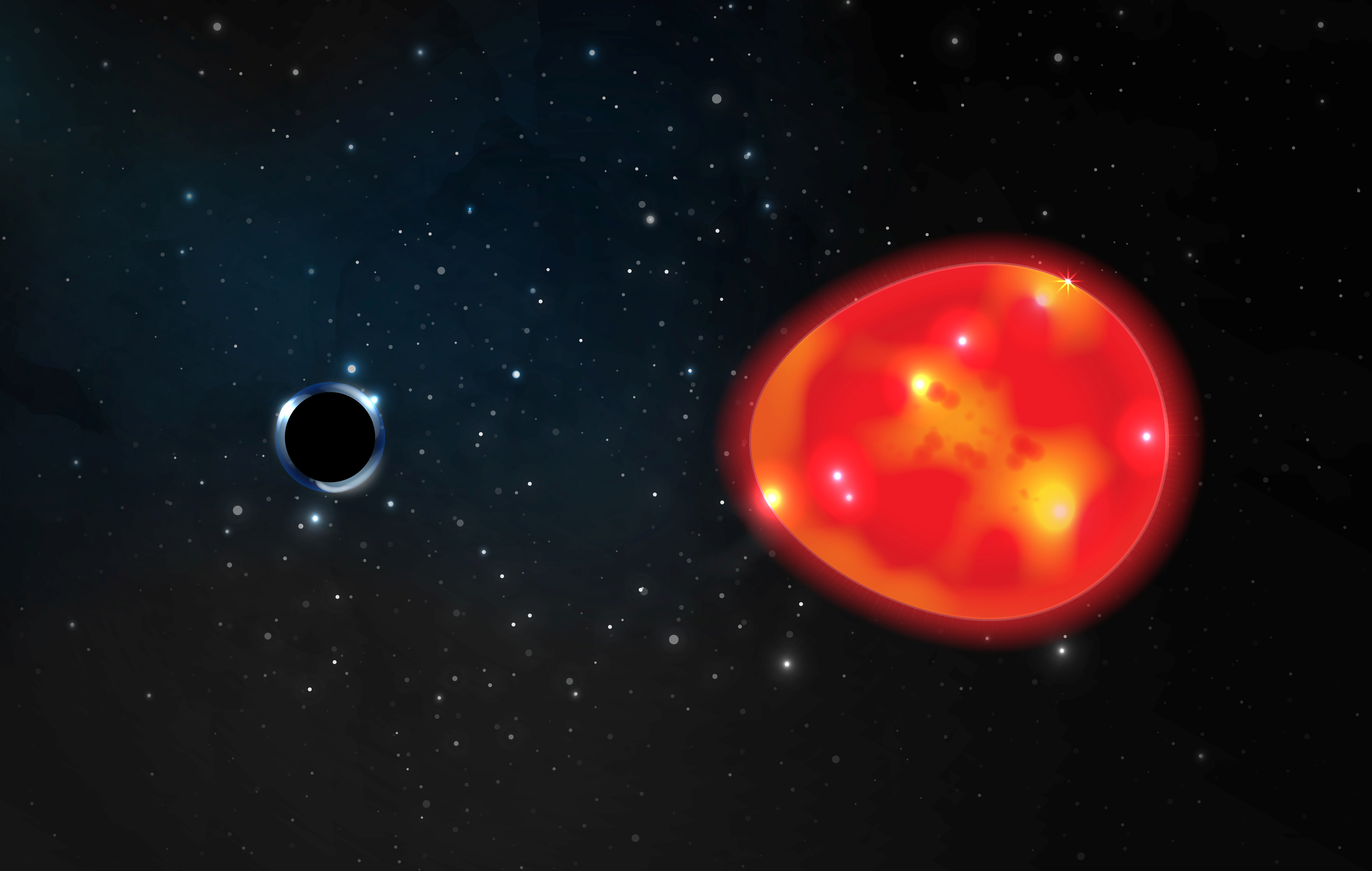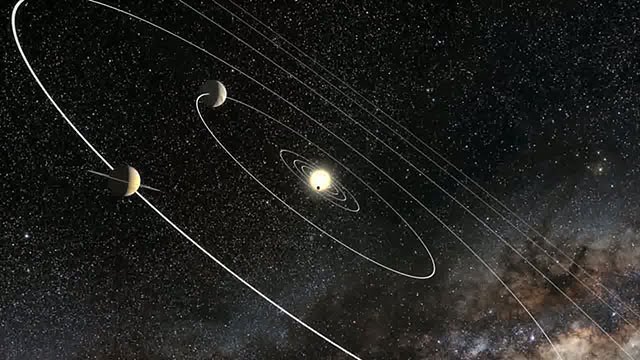If the Sun were replaced by a one solar mass black hole, the solar system would be significantly different. The black hole would have the same mass as the Sun, but its gravity would be much stronger. The black hole would also be much smaller than the Sun.
The black hole would not emit any light, so the solar system would be much darker. The planets would still orbit the black hole, but their orbits would be much different. The inner planets would orbit much closer to the black hole than they do to the Sun.
The outer planets would orbit much farther from the black hole than they do to the Sun.
If the Sun were replaced by a one solar mass black hole, the solar system would be thrown into complete chaos. The first and most obvious effect would be that the Earth would be pulled into the black hole. But, even before that happened, the planets would be thrown out of their orbits and sent hurtling through space.
The Sun is currently the only object in the solar system with enough mass to keep the planets in their orbits. If it were gone, they would all be sent flying off into the universe.
The other major effect of a black hole in the place of the Sun would be the complete lack of light and heat.
Without the Sun, the Earth would be a frozen, dark world. Any life that currently exists would be extinguished.
So, while a black hole in the place of the Sun would be an interesting thought experiment, it would be a disaster for the solar system.
The Earth would be pulled in and destroyed, and the rest of the planets would be sent flying off into the cold darkness of space.

Credit: www.reuters.com
What Would Happen If the Sun were Replaced by a 1 Solar Mass Black Hole?
Assuming that the Sun were magically replaced by a black hole of the same mass, nothing would happen immediately. The black hole would have the same gravitational pull as the Sun, so the planets would continue to orbit in the same way. Over time, however, things would change.
The black hole would slowly consume the planets, starting with Mercury and Venus. The Earth would eventually be consumed as well, but not for billions of years. The outer planets would take even longer to be affected.
As the black hole consumed the planets, it would also release huge amounts of energy. This would make the black hole grow larger and larger. Eventually, it would become so large that it would consume the entire Milky Way galaxy.
So, if the Sun were replaced by a black hole, it would have devastating consequences for the Solar System and the entire galaxy.
What Happens If the Sun Turned into a Black Hole?
A black hole is an object so massive and dense that not even light can escape its gravitational pull. If the Sun were to turn into a black hole, it would be very bad news for us here on Earth.
The Sun is what keeps our planet warm and habitable.
It’s what drives the water cycle and provides the energy for plants to grow. Without the Sun, life on Earth would not be possible.
If the Sun turned into a black hole, it would be so massive that its gravity would start to tear our planet apart.
The oceans would boil away, the atmosphere would be ripped away, and eventually Earth would be nothing but a dusty wasteland.
There is, however, one silver lining to this scenario. If the Sun did turn into a black hole, it would eventually evaporate.
This is due to something called Hawking radiation. So, while it would be an absolute nightmare for us, it would only be temporary.
Of course, this is all just speculation.
The Sun is not going to turn into a black hole anytime soon. But it’s still fun to think about what would happen if it did!
How Many Solar Masses Will Result in a Black Hole?
A black hole is an object with a gravitational field so strong that nothing, not even light, can escape from it. The more mass an object has, the stronger its gravitational field is. So, the answer to your question is: it depends on how much mass is concentrated in a small enough space.
If you were to take all the mass in our solar system and compress it into a single point, you would need to compress it to within 3 kilometers (2 miles) of its center to create a black hole. This would give the resulting black hole a mass of about 2.6 x 10^30 kilograms, or about 2.6 million times the mass of our sun.
But it’s not just the amount of mass that matters, it’s also how that mass is distributed.
If you took all the mass in our solar system and spread it out evenly over an sphere with a radius of 3 kilometers (2 miles), it would not collapse into a black hole. Even though it would have the same total mass, its gravitational field would be much weaker because the mass would be spread out over a much larger volume.
So, to answer your question: it depends on how much mass is concentrated in a small enough space.
For example, a star with twice the mass of our sun would need to be compressed to half its diameter in order to form a black hole.
What Would Happen If the Sun Suddenly Became a Black Hole Without Changing Its Mass Quizlet?
In the unlikely event that the Sun were to collapse into a black hole without changing its mass, the Earth would be pulled in along with the rest of the Solar System. The Sun’s gravity would become so strong that not even light could escape. The resulting black hole would be incredibly dense, with a diameter of just a few kilometers.
The good news is that the Sun is too small to ever collapse into a black hole in this way.
What If the Solar System Orbited a Black Hole?
If the Sun were Replaced by a One-Solar-Mass Black Hole Quizlet
It’s no secret that our sun is integral to sustaining life on Earth. But what would happen if it were suddenly replaced by a one-solar-mass black hole?
For starters, the night would be eternally dark, as the black hole would absorb all the light that reaches it.
The lack of sunlight would have a devastating effect on plant life, and eventually all life on Earth would perish.
But that’s not all. The black hole’s gravitational pull would be so strong that it would begin to tear our planet apart.
In fact, the entire solar system would eventually be pulled into the black hole, never to be seen again.
So, while a one-solar-mass black hole might make for an interesting thought experiment, it’s safe to say that we’re better off with our good old sun.
If a Photon of Light from a Distant Body Passes Close to a Massive Body, the Light Will
If a photon of light from a distant body passes close to a massive body, the light will be bent. This is because the massive body exerts a gravitational force on the photon, which causes it to deviate from its original path. The amount of bending depends on the mass of the body and the distance of the photon from the body.
If the Sun Turned into a Black Hole, How Big Would It Be
In the early universe, there were no stars or galaxies. Instead, the universe was filled with a hot, dense soup of particles. Then, something happened that caused the universe to expand and cool.
This allowed the first stars and galaxies to form.
The sun is thought to have formed about 4.6 billion years ago. It’s been shining ever since.
But what if the sun suddenly turned into a black hole?
A black hole is an object with a gravitational field so strong that nothing, not even light, can escape its pull. If the sun turned into a black hole, it would be extremely small.
In fact, it would be about the size of a city on Earth.
But even though it would be small, it would have a huge gravitational field. Anything that came too close to the black hole would be pulled in and would never be seen again.
The Earth would be in big trouble if the sun turned into a black hole. The black hole’s gravitational field would be so strong that it would start to pull the Earth towards it. Eventually, the Earth would be pulled into the black hole and would be destroyed.
Fortunately, there’s no need to worry. The sun is not going to turn into a black hole. It doesn’t have enough mass to do that.
So we can all enjoy its warmth and light for many billions of years to come.
What Can We Detect from Matter That Has Crossed an Event Horizon?
In astrophysics, an event horizon is the region around a black hole from which no escape is possible. Once matter or energy crosses the event horizon, it is forever trapped within the black hole. While matter that has crossed an event horizon can never be observed directly, we can learn about its properties indirectly.
For example, by studying the light emitted from matter just outside the event horizon, we can infer the properties of the matter inside.
In general, the event horizon of a black hole is the point of no return. Beyond this point, the gravitational pull of the black hole is so strong that nothing, not even light, can escape.
As a result, the event horizon appears black.
The size of the event horizon depends on the mass of the black hole. For example, the event horizon of a supermassive black hole, such as the one at the center of our galaxy, is about the size of our solar system.
Conversely, the event horizon of a stellar-mass black hole, such as the one that formed from the collapse of a massive star, is only a few kilometers across.
While the event horizon appears black, the matter inside is not. In fact, the matter inside a black hole is incredibly dense and hot.
As it falls towards the center of the black hole, it heats up and emits radiation. This radiation is what we observe when we look at a black hole.
The radiation emitted by matter near the event horizon can tell us a lot about the matter inside.
For example, by studying the spectrum of this radiation, we can infer the temperature and density of the matter inside the black hole. Additionally, by measuring the variability of the radiation, we can learn about the size and shape of the event horizon.
In summary, while we can never directly observe matter that has crossed an event horizon, we can learn about its properties indirectly.
By studying the light emitted from matter near the event horizon, we can infer the properties of the matter inside.
Conclusion
If the Sun were replaced by a one solar mass black hole, the Earth would be pulled towards the black hole by its gravitational force. The black hole would also emit a strong radiation field, which would heat up the Earth and make it uninhabitable.
